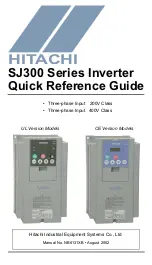
25
7. Installation
EN
7.
Installation
7.1
Planning the installation
General instructions
► Always use the mounting plate supplied with the solar
power inverter.
► First mount the solar power inverter on the wall and
then establish the electrical connections.
► Possible noise emissions can be irritating when the
device is used in living areas. Avoid installing the device
in living areas for this reason.
► Mount the solar power inverter so that the LEDs and
display can be easily seen. Pay attention to the reading
angle and installation height.
► Mount the solar power inverter on a fireproof wall.
► Mount the solar power inverter on a non-resonating
wall.
► Check that the wall is capable of carrying the heavy
weight of the device.
► Use dowels and screws for the installation that are suit-
able for the wall material and the heavy weight.
► Mount the solar power inverter vertically, see
Fig. 7.1.
✓
Fig. 7.1.:
Mounting alignment
Ambient conditions
► The solar power inverter has an IP65 degree of pro-
tection and can be installed indoors and in protected
outdoor areas.
► Note the
Operating temperature range at full power
without derating
and the
maximum operating tem-
perature range
.
When the first operating temperature range is exceeded
the solar power inverter reduces the amount of power
generated. When the maximum operating temperature
range is exceeded the solar power inverter switches off.
–
Be sure to conform to the specified minimum
clearances to walls and other solar power inverters
when installing the device (see
Fig. 7.2)
–
Install multiple solar power inverters next to each
other.
–
Avoid direct sunlight.
–
Ensure an adequate circulation of air. Install a
separate cooling device if necessary.
>30 cm
>30 cm
>50 cm
>50 cm
>30 cm
Fig. 7.2.:
Mounting clearances for correct convection
► Avoid heavy soiling. Dust can impair the performance of
the device.
► Protect the solar power inverter from heavy rain and
snow deposits.
NOTE
Before installing the inverter, it is recom-
mended that you unscrew the wireless
antenna and remove it to avoid accidential
damage during installation. Be sure to put
it back after finishing the install for wireless
connectivity.
















































